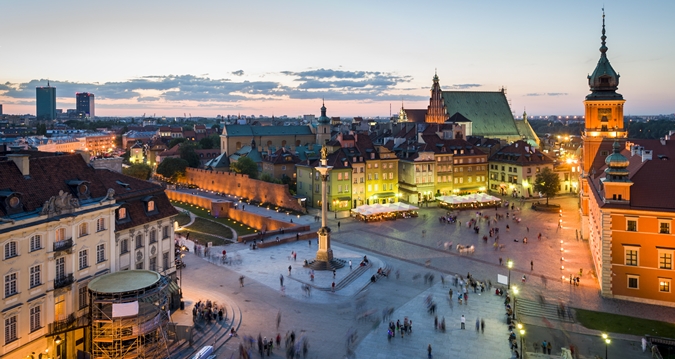
Latvia’s capital, Riga, offers an interesting mix of traditional and modern. The city sits at the mouth of the scenic Daugava river, a unique location at the juncture of trading routes. It used to be part of the Hanseatic league which was a huge trading empire with close links to Germany. Much of the Latvian capital was destroyed during WWII, but the city is currently experiencing a renaissance, with many large-scale restoration projects. This is the largest city in the Baltics and home to more than a third of the entire country’s population (just over 2 million). Riga has managed to retain its history and Latvian traditions amidst rapid economic growth and even clinched a UNESCO World Heritage Site for having the largest concentration of German art nouveau architecture in the world. A dynamic, friendly atmosphere coupled with photogenic postcard pretty streets. It’s worth a trip to the Baltics just for that. Even after the switch of Latvian lats currency to the euro, the country is still affordable to visit, and is cheaper than Western Europe.
Stroll through the Old Town: free
Discover the charms of the Old Town pounding the streets in the morning because no vehicles are permitted to enter. You will find an abundance of bars, cafes and restaurants. In medieval times, Riga was a domineering harbour where traders from the Baltic region and North Germany convened, and unique residential houses and sacral structures remain as a testament to that glorious past, from the Riga cathedral to the gothic St Peter’s church.

Free walking tour
Riga free city tour that runs everyday starts at St Peter’s church at 12:00. Look for a yellow suitcase. It lasts about 2.5 hours.
Visit to the local market: free
To see how local people go about their shopping, visit the local market. It is stored in four big warehouses along the river which used to house Zeppelins. Now, it is a huge marketplace where you can get local produce at cheaper prices compared to the supermarkets. I bought 1kg of strawberries at $2.20 and 1kg of cherries at $3.50 which is so much cheaper than in Singapore! They were sweet and juicy too.


Sky bar at Radisson Blu hotel
For free panoramic views of the city, head to Radisson Blu hotel along Elizabetes iela and go up to the 26th floor where you can enjoy the views from the top. It is not necessary to buy any drinks. I just went up there to take photos and went down.

The Freedom Monument has been Riga’s central landmark for almost a century. This 42.7 m tall granite and copper work of art is a symbol of the Latvian nation’s striving for freedom and independence. The woman on top of the monument is holding up three golden stars, which represent Latvia’s historical regions of Kurzeme, Vidzeme, and Latgale. The motto “For the Fatherland and Freedom” is inscribed upon the base. It was unveiled on 18 November 1935 and financed entirely from public donations. There is an interesting story behind how this monument was preserved during Soviet times. The city government came up with the excuse that the three stars represented Soviet Estonia, Latvia and Lithuania (the three Baltic states), while the woman represented Mother Soviet. thus the Soviet state bought this story and it was not destroyed.


Another interesting piece of architecture is the National Library. Opposite to the Old Riga on the left bank of the River Daugava stands the new building of the National Library of Latvia (LNB) — the Castle of Light — which is one of the most impressive culture buildings in Latvia over the past decades. The Castle of Light is intended as a multifunctional culture and education centre, repository of knowledge.
Where to eat?
LIDO: Krasta iela 76, Latgales priekšpilsēta, Rīga, LV-1019
typical Soviet-style canteen with cheap Latvian cuisine. You have to take a tray and pick up food along the way before paying at the cashier, similar to Ikea.
Folkklubs Ala Pagrabs : Peldu iela 19, Centra rajons, Rīga, LV-1050
Traditional Latvian cuisine in the Old Town, recommended by my host and the walking tour guide, but I did not get a chance to try it.
Overall, I enjoyed my time in Riga. It has a small town feels without being too crowded like the big Western European cities. I enjoyed admiring the art nouveau architecture in the city and also trying out the various types of food. One to two days is enough to see the whole city.


